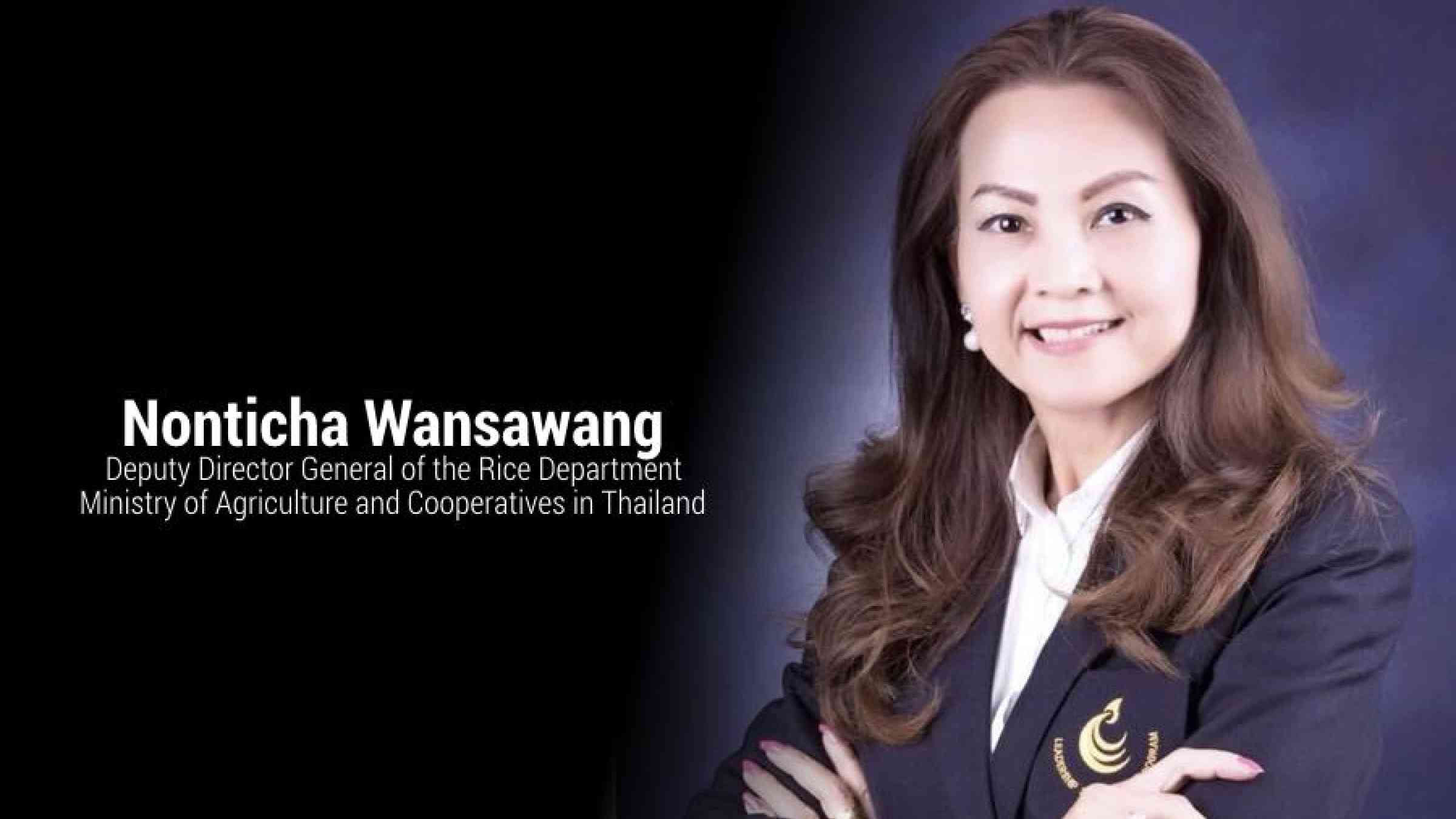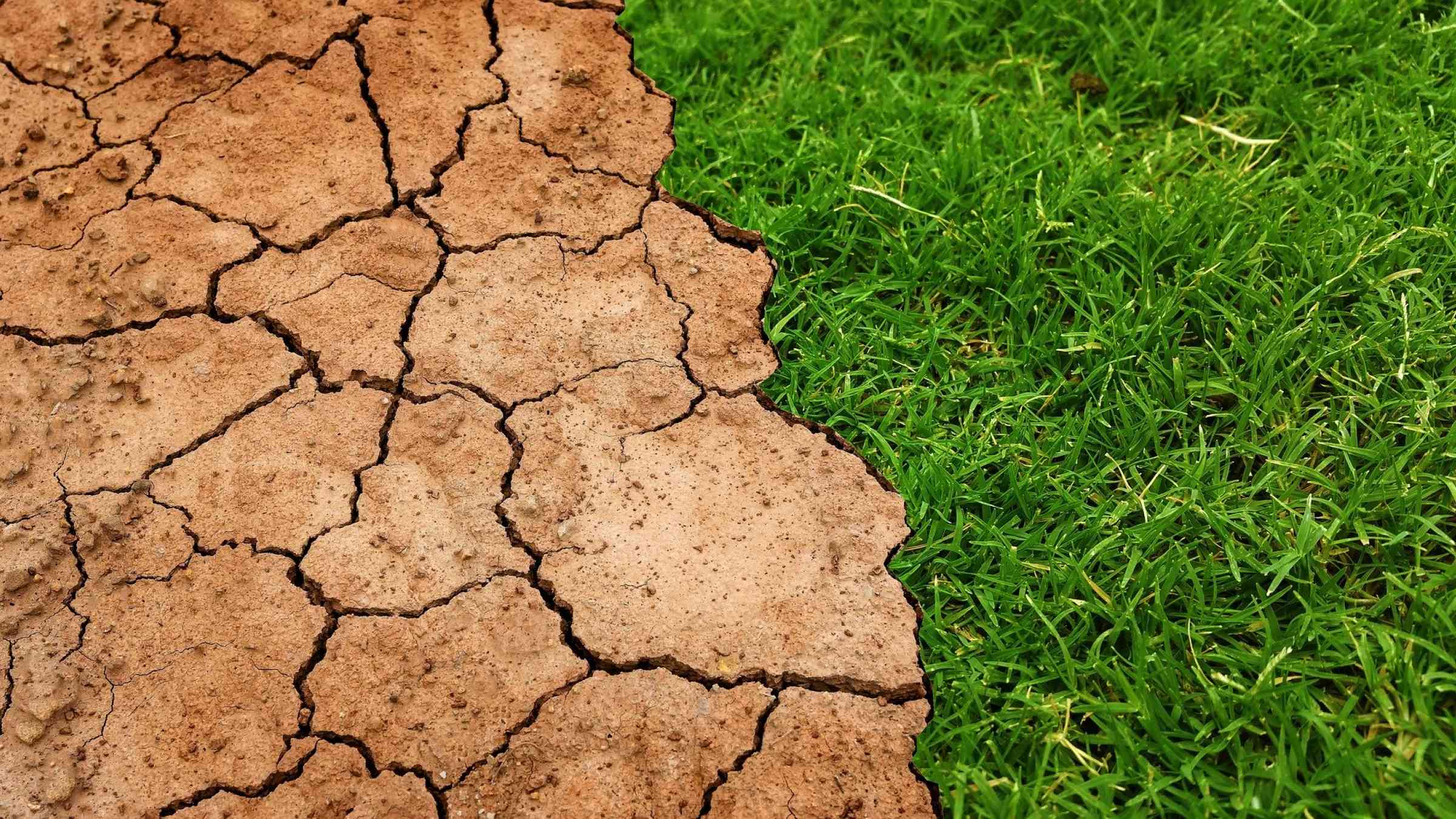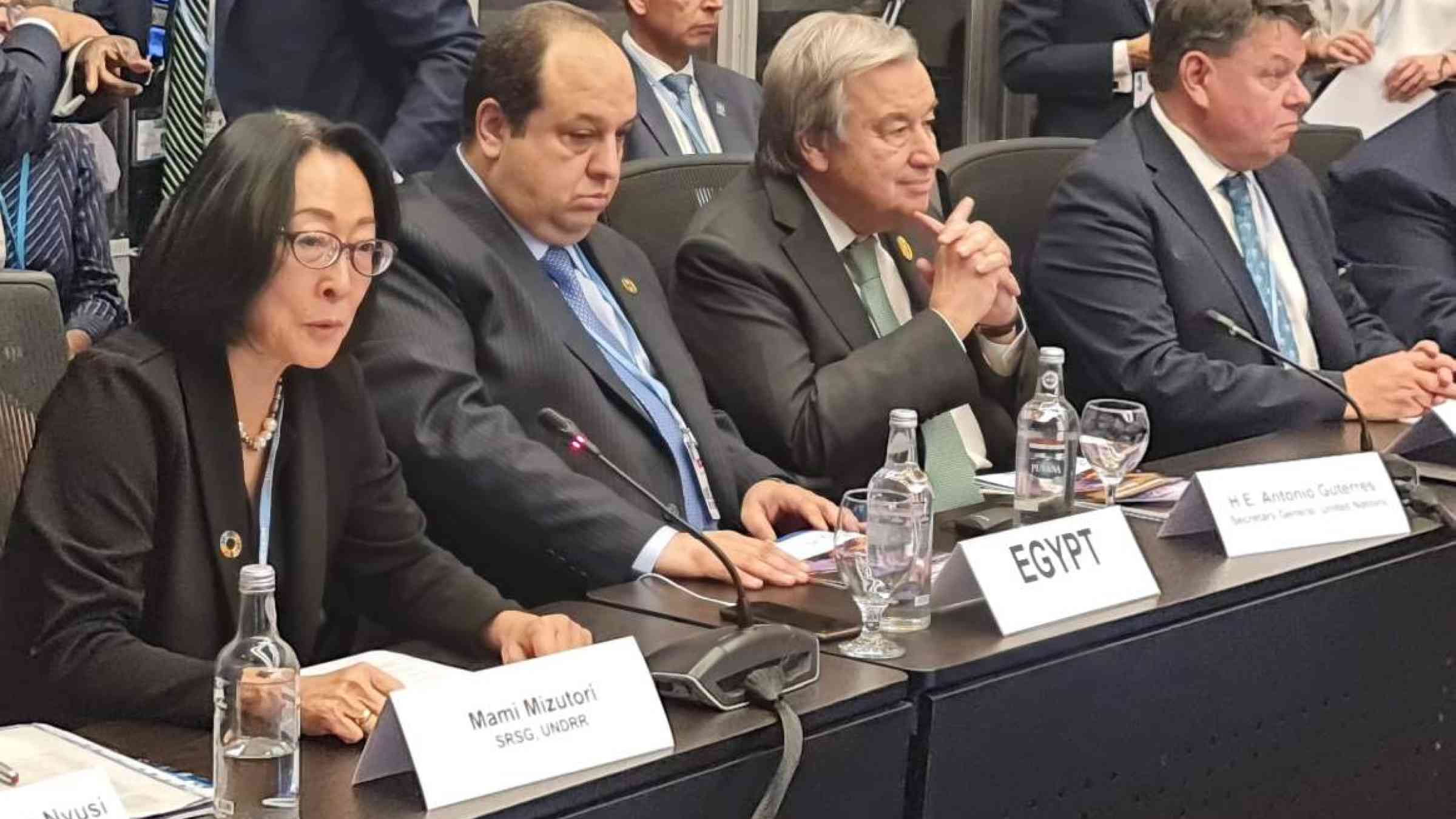
Climate change is the defining issue of our time….every day we fail to act is a day that we step a
little closer towards a fate that none of us wants- a fate that will resonate through generations
in the damage done to humankind and life on earth.
The climate emergency is the biggest economic, social, and environmental threat facing the planet and humanity. Climate-related disasters have almost doubled compared to the previous twenty years. This has exacerbated inequalities within and between countries, with those contributing least to global emissions often experiencing the worst impacts of the climate emergency.
We are at a crossroads. Climate change is undermining the ability to achieve the 2030 Agenda for Sustainable Development, including the Sendai Framework for Disaster Risk Reduction.
It is rewriting the global resource map for assets such as water, arable land and energy while driving migration, displacement, and instability. Transitioning to a sustainable net-zero carbon world requires rapid systems-level changes, including in key sectors such as energy, food, and health.
Collective action, political leadership, and financing are needed to keep the global average temperature within the 1.5 degrees safer limit outlined in the Paris Agreement. However, prudent risk management requires preparation for a range of negative outcomes associated with varying degrees of warming and to effectively manage unexpected concurrent threats, such as the current COVID-19 crisis.
How climate change will drive risk of:
- Cyclones: Under 2.5°C of global warming, the most devastating storms are projected to occur up to twice as often as today. (Bacmeister et al., 2018)
- Drought: The number of people suffering extreme droughts across the world could double in less than 80 years (Pokhrel, 2021).
- Floods: For each 1°C of global warming, extreme daily precipitation events may intensify by about 7% (IPCC, 2021).
- Heatwave : Heat stress from extreme heat and humidity could annually affect 1.2 billion people by 2100 (Li, Yuan & Kopp, 2020).
- Infectious diseases: By 2050, mosquitoes that carry vector-borne diseases like Malaria could reach an estimated 500 million more people (Ryan et al., 2019).
- Sea level rise: Coastal flooding events could threaten assets worth up to 20% of the global GDP by 2100 (Kirezci et al., 2020).
- Wildfire: By 2030, fire season could be three months longer in areas already exposed to wildfires (Ross, Gannon & Steinberg, 2020).
Challenges
1. Current mitigation trajectories are leading to unmanageable disaster risk
Climate change increases the frequency and intensity of hazards, the exposure and vulnerability of communities and individuals, and the stress on water and food security. On current trends, the world is potentially on track for a temperature increase of 3 degrees or higher. Current mitigation efforts are insufficient. A continued increase in carbon emissions will result in irreversible changes including the probability of breaching thresholds for “tipping point’ impacts, such as ecosystem collapse.
2. Investment in risk-informed adaptation is lagging
Risk-blind planning can and in some cases already has created new risks and resulted in maladaptation. A radical scale-up in adaptation measures and a comprehensive approach to risk analysis and management covering a full range of hazards is required. Current risk analytics are inadequate to enable effective preventive and anticipatory action to reduce the humanitarian impacts of climate related disasters.
3. Action to manage long-term impacts and residual risks is inadequate
Climate crisis impacts such as sea-level rise or ocean acidification are growing global challenges that have not been adequately addressed in current development planning. This failure to account for risk has hindered planning and consequently under-estimated the cost benefits of rapid climate action. The continuing increase in the number of extreme weather events and the likely impact on population displacement, loss of livelihoods, access to health and other basic services will be overwhelming.
4. Investment and financial systems are not fit for purpose
Financial systems need to better quantify the extent to which their assets will retain their value in this era of climate change. Undervaluing climate risk is a particular concern for longer-term investors and sectors including insurance, pension funds, infrastructure, and agriculture.
5. Climate change and disasters are reinforcing inequalities
Climate change, vulnerability, and inequality interact in a vicious cycle: disadvantaged groups suffer disproportionately from the adverse effects of climate change, which diminishes their ability to reduce their exposure, avert potential effects, cope and recover from climate and disaster impacts, resulting in even greater inequalities.
More about our Zero Climate Disasters campaign
Policy recommendations
1. Galvanize political leadership and momentum
- Ensuring the world is safe in the climate future is the greatest public good governments can deliver. Stepped up action by the G20 to reduce greenhouse gas emissions to meet the 1.5-degree target must be a global priority. Preventing and reducing disaster risk needs to be central to these efforts.
- Government policies, plans, and programmes must be designed to operate under a range of risk scenarios. Governments need to upgrade climate and disaster risk analytics to better account for systemic risks, knock-on impacts, and the medium to long term effects of various climate scenarios. Cost-benefit analyses must integrate the real projected costs of future disaster impacts. Most investments in climate change adaptation and disaster risk reduction make good business sense once the costs of externalities are accounted for.
- The disaster risk reduction community has decades of experience in managing extreme events and reducing risk related to potential climate-related disasters. Their experience needs to be harnessed for planning and the scaling-up of adaptation actions.
2. Scale up comprehensive disaster and climate risk management
- Comprehensive disaster and climate risk management is central to development planning, including in energy, industrial, land, ecological and urban systems. Risk-centred approaches should be integrated into National Adaptation Plans (NAPs), and adaptation and climate information into national and local disaster risk reduction strategies.
- NAPs, Nationally Determined Contributions (NDCs), national and local development plans, spatial and sectoral planning processes need to apply comprehensive risk management principles and consider how trade-offs and co-benefits will influence potential systemic risks such as pandemics and displacement.
- Improved metrics on adaptation and risk management are urgently needed to measure the degree to which the climate emergency is corroding resilience and achievement of the SDGs and Sendai Framework targets. Better prevention and risk management minimizes adverse effects and creates opportunities to transform systems and societies. Disaster risk management and adaptation plans should be based on analysis of both historical disaster trends and future climate and disaster risk projections.
3. Empower communities, mobilize society to ensure no one is left behind
- Gendered roles, responsibilities, access to resources and decision-making power mean that women and men contribute differently to the causes of climate change. They are affected differently by it and react differently to its impacts. Gender has a powerful influence on people’s experience of climate change and disasters, and gender equality and women’s empowerment are powerful levers for change. Integrating a gender analysis in the development and implementation of climate change and disaster risk management policies, strategies and programmes is essential to prevent the expansion of inequalities driven by climate change.
- There is a need for a new “social contract” on climate change that sets out responsibilities and what can be expected from governments, cities, the private sector, and other actors.
4. Invest in sustainable, resilient infrastructure systems
- Infrastructure assets should be prioritised, planned, designed, built, and operated to account for climate changes and potential disasters. Services provided through infrastructure systems (energy, water, health, etc.) should also account for potential climate and disaster-related disruptions.
- Massive investments are needed to build low-carbon infrastructure and for retrofitting. Comprehensive risk assessments should inform these investments to ensure that they are resilient and do not create or exacerbate future risks.
- Scaling up nature-based solutions, achieving land degradation neutrality, restoring the oceans, and halting biodiversity loss and prioritizing sustainable ecosystem management will be critical for success.
5. Promote innovative investments and financing mechanisms
- The transformations required to meet the 1.5-degree target will have wide impacts across economies and societies. Governments and non-State stakeholders should fulfil pledges for an equitable division of climate finance to support mitigation and risk-informed adaptation action.
- Risk tagging and tracking of budgetary and expenditure flows enables a clearer understanding of how much countries ought to spend, which areas are being prioritised, and better measurement of risk reduction and adaptation approaches.
- Investing in better understanding and quantifying of risk helps price it, which in turn informs financing and investment decisions. This should be complemented by improved public and private financial regulation and risk disclosure mechanisms to better account for climate and disaster risk.
- Post COVID-19 stimulus packages should catalyse greener economic growth, eliminate fossil fuel subsidies, avoid environmental deregulation, and address key disaster risk drivers.
- Social protection acts as an effective vehicle to implement a range of adaptation and disaster risk reduction programmes. Such initiatives should be shock-responsive and universal to reduce vulnerabilities, provide income protection, and act as a mechanism for ex-ante relief assistance.
- Financing instruments and layered financing mechanisms should be scaled-up to enhance preventive and anticipatory actions.
- Partnership with the private sector should be leveraged to co-develop innovative financial instruments, including to manage residual risk e.g., through bonds, insurance products and other contingent financing mechanisms. Incentives and regulatory mechanisms should catalyse action and accelerate investment pathways as part of a transition to low carbon, resilient economies.
6. Ensure behavioural change through science, evidence and effective communication
- Scientific knowledge and evidence should be strengthened to better inform plans and policies while communication with and within communities should be enhanced to act as an effective bridge between knowledge and behaviour. Communities should have easy access to information on climate risks, associated impacts, and the cost of inaction, to better appreciate the impact of their actions.
- All risk information, including early warning, should be impact-based for better understanding, and triggering action.
Publications
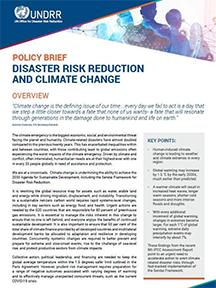 | Policy brief: Disaster risk reduction and climate change This policy brief explores the challenges faced in disaster risk governance in relation to the climate emergency. Collective action, political leadership, and financing are needed to keep the global average temperature within the 1.5 degrees safer limit outlined in the Paris Agreement. |
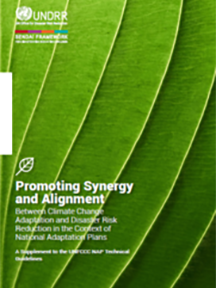 | Promoting synergy and alignment: between Climate Change Adaptation and Disaster Risk Reduction in the context of National Adaptation Plans The supplement focuses particularly on the opportunities that the National Adaptation Plan (NAP) process provides to national authorities and stakeholders for integrating risk-centred approaches and in creating synergies and effective connections with disaster risk reduction efforts. It should be used in conjunction with the NAP guidelines10 as it uses the four elements outlined in that document as its basis.. |
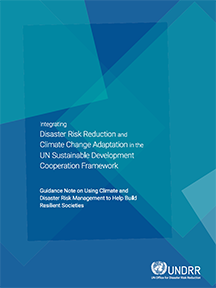 | Integrating Disaster Risk Reduction and Climate Change Adaptation in the UN Sustainable Development Cooperation Framework This Guidance Note helps United Nations Resident Coordinator Offices (UNRCOs) and United Nations Country Teams (UNCTs) in formulating and implementing Cooperation Frameworks that support countries, communities and people in using climate and disaster risk management approaches to build disaster resilience. |
Rumana Khan: "There is a growing crisis with climate-related disasters"
The intensity and frequency of the floods have increased in recent years and it’s creating greater vulnerabilities for women and girls. The impact that it has on the lives of the people is significant, besides tropical cyclones we get tidal surges and that also adds to the number of displacements.


